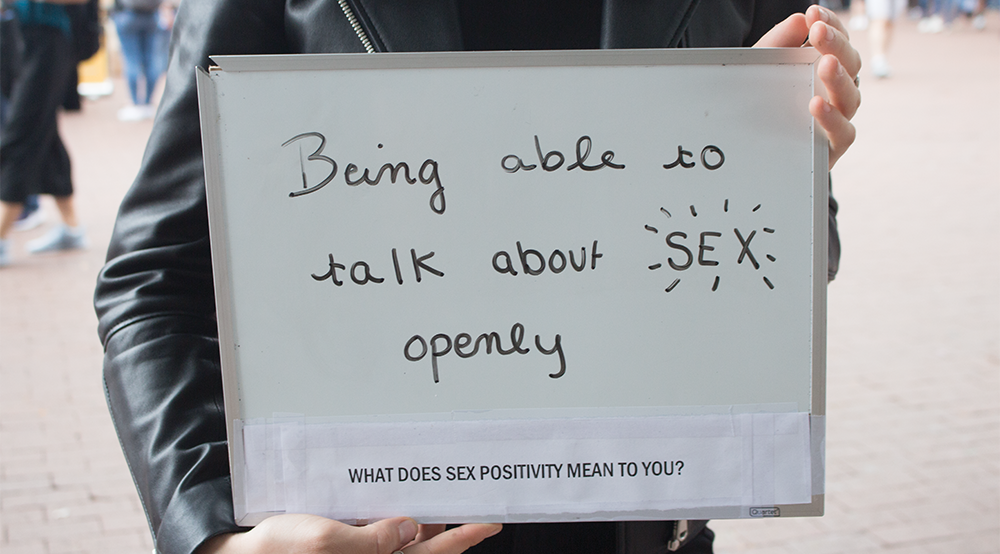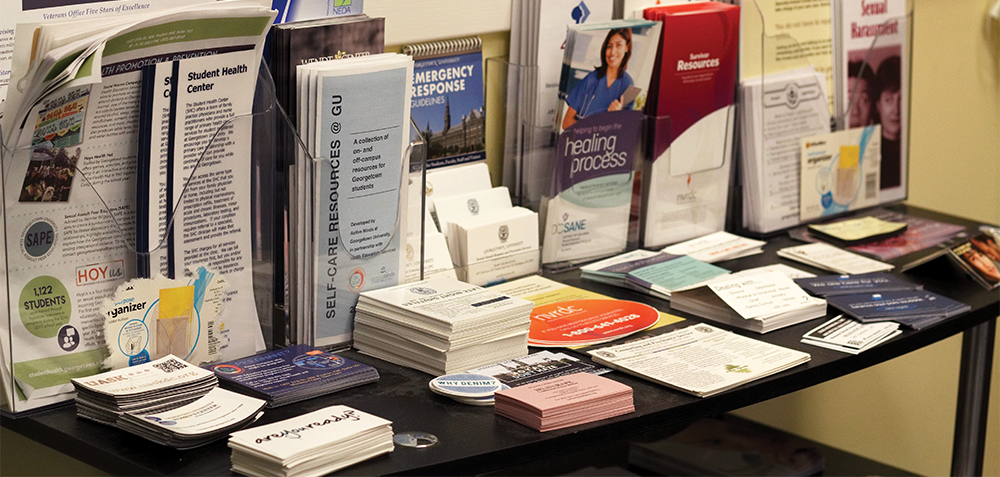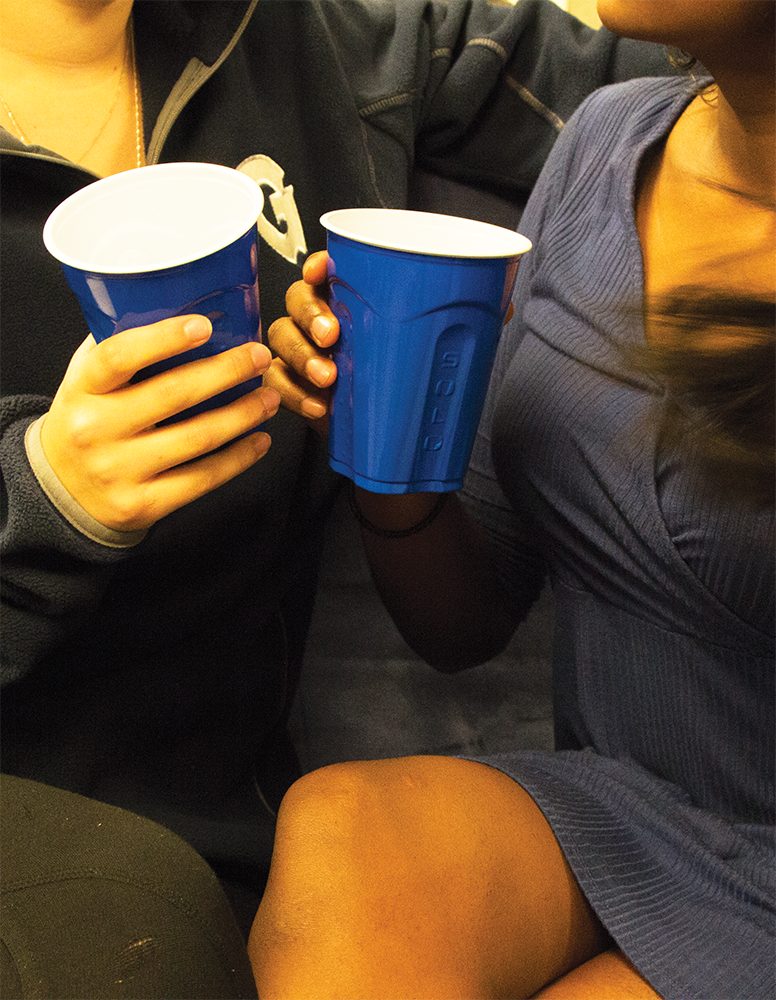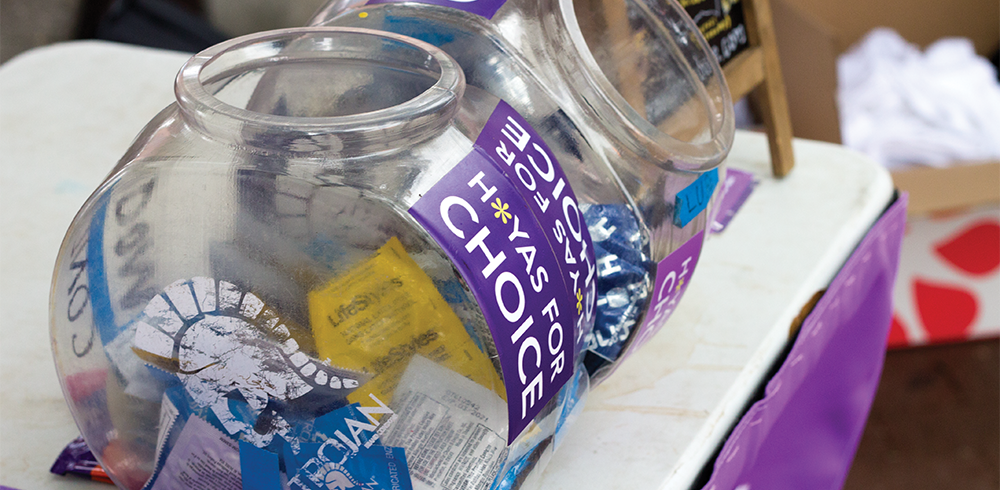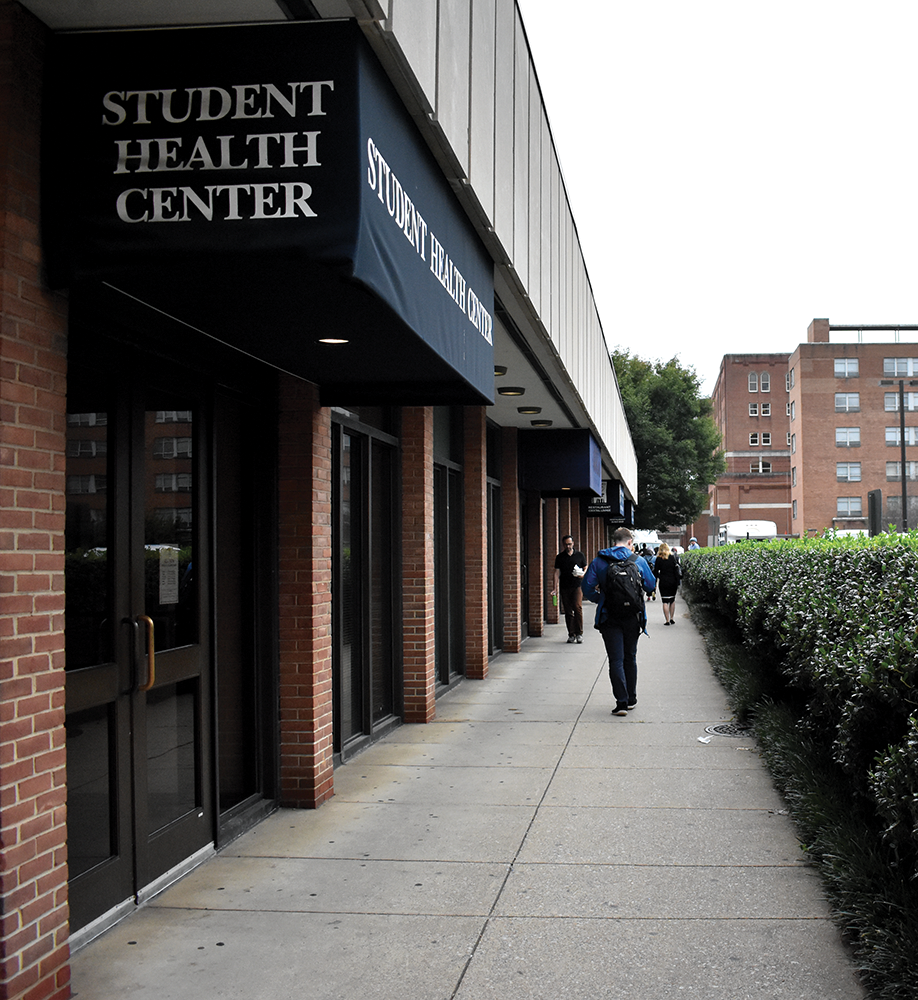
Most Hoyas are involved in many clubs on campus, and the sheer proximity leads to hookups amongst the groups. This can lead to awkward social situations or work environments.
At colleges and universities across the country, the social scene revolves around sororities and fraternities. Yet on a campus like Georgetown where only a handful of Greek chapters exists, the dominant social groups take on a much different form.
Sports teams and clubs as well as academic, career and cultural organizations are the focal point of social life at Georgetown. Prospective students hear about the more than 200 clubs and activities that exist at Georgetown on their tours, and once an accepted student arrives on campus, he or she will attend the hectic student activities fair as if it were a rite of passage.
At the activities fair, hundreds of tables are sprawled across Healy and Copley Lawn, countless fliers are handed out advertising any club imaginable and older students run around telling anyone that will listen why their club is the greatest thing since John Carroll.
When you ask Georgetown students what they do on campus, many will list four, five or six clubs and activities they participate in. Students are involved in many different parts of campus life and form close friendships with members of their respective organizations. Outside of the classroom, clubs provide an outlet for students with shared interests to gather and make lasting connections.
College is one of the only times when students will be completely surrounded by people of the same age and interests. This ease of accessibility and connection has created an environment where casual hookups and romantic relationships are all but certain.
The phrase “hookup culture” carries with it a largely negative connotation, yet it has become more and more applicable to the noncommittal and frequent intimacy that develops between club members. More serious relationships are also bound to occur within organizations, and Georgetown students are impacted by this social climate whether they directly partake in it or not.
***
In any situation, it is a given that people are more likely to become attracted to those they spend more time around. Organizations at Georgetown constitute a huge part of students’ days and are integral to their identities on campus.
“These are the people we work with, study with, party with and go on trips with,” Sam* (SFS ’18), a member of Students of Georgetown, Inc., said.
Students are more open to meeting new people at parties, many of which are exclusive to the members of a club. This restriction results in relationships forming within that organization.
“The hookup culture pervades clubs and organizations because clubs make up most of the party scene here,” Claudia* (COL ’17), a member of the coed business fraternity AKPsi, said.
Many clubs host parties in the beginning of the year where members can meet each other and become familiar with others who are joining the organization for the first time.
“[A female Corp member and I] met at a welcome party and we hooked up,” Sam said. “You can’t have 359 18- to 22-year-olds constantly around each other and not expect some amount of sexual interaction.”
The large size of The Corp, along with its emphasis on social events, often lends itself to noncommittal intimacy, and its general presence in campus life has made the organization’s social happenings a hot topic among students.
“It’s a large enough organization that there isn’t huge amounts of awkwardness around low-commitment hookups,” Blake* (COL ’17), also a member of The Corp, said.
This isn’t a phenomenon unique to The Corp — in larger social groups on campus, it is unlikely that members from different branches or sections all know each other or interact outside of the social events hosted by the organization. Aside from those run-ins at Leo’s or knowing glances on Lau 2, it is possible that most past hookups will not even cross paths on a daily basis.
This is less so within smaller clubs, teams and close-knit sections where the same members often interact on a weekly basis and grow accustomed to seeing one another.
“Hooking up within clubs can definitely make the dynamic of an organization awkward,” Claudia said.
AKPsi boasts around 120 members, compared to The Corp’s much larger membership. Members of AKPsi generally see each other more frequently at meetings or parties. This is different from The Corp, where the 10 different services often host their own separate events.
“It totally depends on the reactions of the people who hooked up and the rest of the club,” Claudia said.
“Because hookups are so casual, though, they tend to go bad more easily than official relationships, which I think is what can affect clubs.”
***
Despite the prominence of casual hookups in some Georgetown clubs, there are also people within the same organization who are committed to more serious relationships.
“I am currently dating someone in The Corp and have hooked up with several people in The Corp,” Corp member Frank* (COL ’17) said.
“I met all these people through work, both working with them on shifts and at social events outside of work.”
While these organizations definitely create a culture of casual hookups, it is evident that they also allow many students to get to know other people on a more personal level.
This is true for many clubs beyond The Corp. Members of club sports teams can also find a connection with teammates. “I met the [guy] from the club sport from a mutual friend and got to know him a lot better through the club sport,” said Anna* (COL ’17), who hooked up with another member of her club team. Participating in the same club sport provides a level of commonality and shared interest.
Some students noted that different ratios of guys to girls changed the dynamic of the hookup. On some club sports teams, there is a majority of guys with just a few girls or vice versa. Many reported that this made them think twice before hooking up with someone on their team.
When asked if there was a hookup culture on her club sports team, Anna said, “No, mostly because I was the only girl on it last semester.”
While she did hook up with one other guy on the team, her opinion of the team and their opinion of her never changed for the worse.
***
In organizations where students are often hooking up with one another, there seemed to be a consensus that any attention paid to a dance-floor-make out would soon dissipate.
“In my particular organization hookups are not entirely uncommon and although awkward at first, after a few days there’s usually some other drama that comes about,” Corp member Meghan* (SFS ’17) said.
Those who went beyond this noncommittal to pursue more serious relationships within the club quickly found that their overall perspective had changed.
“[The Corp] went from being mostly a low-commitment hookup culture in my eye to something that could actually foster a longer-term relationship,” Blake said. His fellow organization members fully supported his relationship and encouraged him to pursue it. “I [now] know a number of people who are either in relationships and simply aren’t interested in hooking up with other Corpies.”
The Corp has a reputation for being both a successful student business as well as a fraternity-like social group.
Ian Philbrick (COL ’17), who is not a member of The Corp, demurred from passing judgment.
“It’s hard for me to know exactly, and I also think that people that don’t get certain positions and see things from the outside have an unfair perspective of what goes on [in The Corp],” he said. “At the same time, a lot of rumors and stereotypes are generally based on truth. I wouldn’t be surprised if some of those things happen, and I can see why people would be frustrated by that.”
Some Corp members are unafraid of confronting the stigma around this culture.
“Corpies don’t hook up with each other because we feel an overarching sexual pressure to do so,” Sam said.
Contrary to popular belief, he argued that it is a natural development that happens no more in The Corp than in any other student organization.
“[The pressure of Corpies hooking up] is completely a myth. We hook up with each other because we are constantly around each other and we get along,” he said.
Anna is also a member of AKPsi, and after a period of time in the fraternity, she reported seeing the social scene differently.
“[It] made me think of the frat as a little more incestual because I realized how many people within it had hooked up with each other,” she said.
Another member of The Corp said that being in a relationship with a fellow employee changed his views to an extent.
“[My views changed] in the way a normal relationship would — seeing another person’s perspective on organizational issues — but not in the sense that I look at The Corp differently,” Robert said. “My idea of The Corp when I joined remains very similar to the way I look at it now.”
Although most students said that a hookup culture did not alter their views of the organization at large, some took a different stance on how it can affect individual dynamics within the larger club or group.
“This relation did not change the way I saw the organization as a whole, but did make me wary that the relation changed the way people in the organization saw me,” Meghan said.
***
In general, most students reported seeing and experiencing a hookup and relationship culture directly tied to their clubs and organizations. This fact seems obvious, but it is a telltale sign as to how Georgetown social and academic life operates.
Given the premium placed on being part of competitive clubs and organizations, incoming students accepted into this social scene only reinforce this trend. Both official and unrecognized groups shape their own social scenes not just by throwing parties but also through more formal, club-related activities.
They provide a space where like-minded individuals can come together outside of the classroom and spend time getting to know one another, for better or for worse.
*Names have been changed to protect anonymity.



